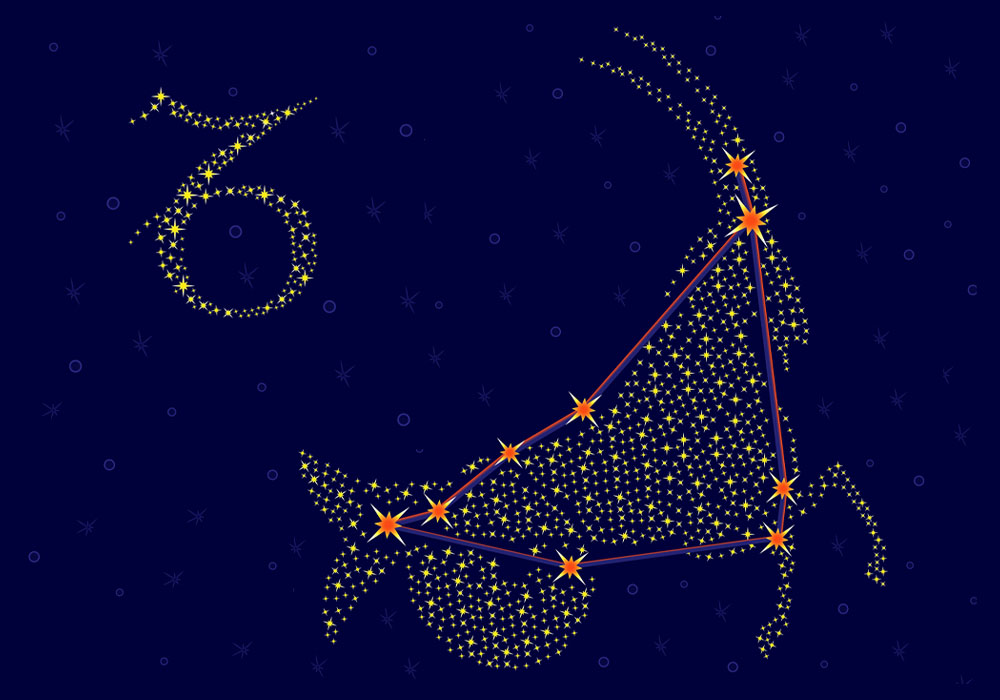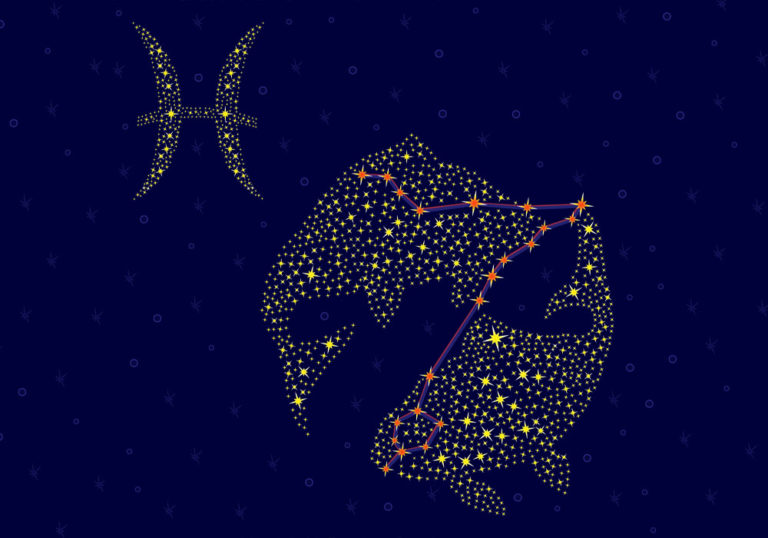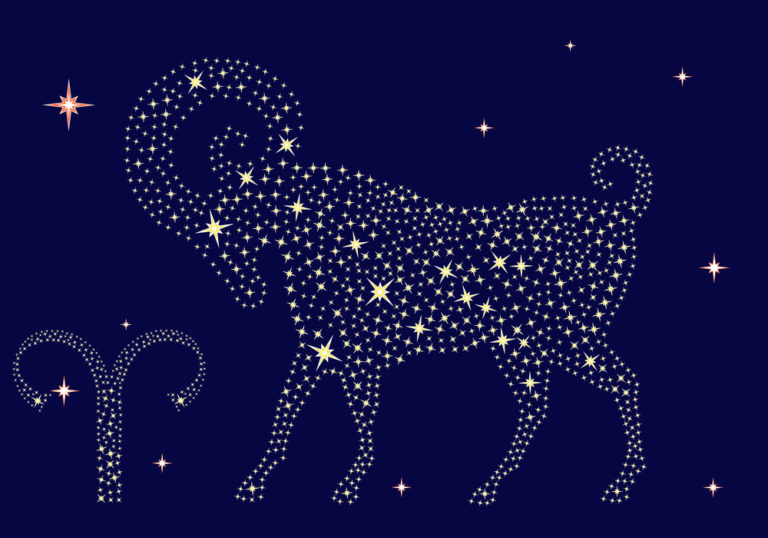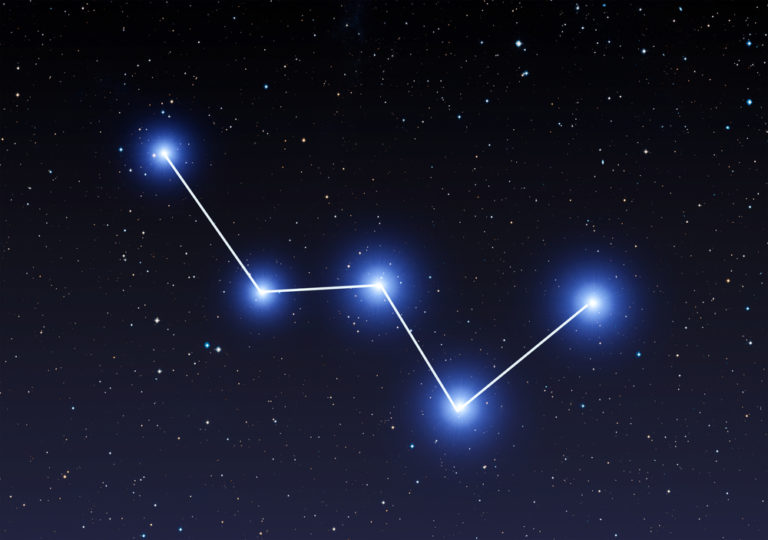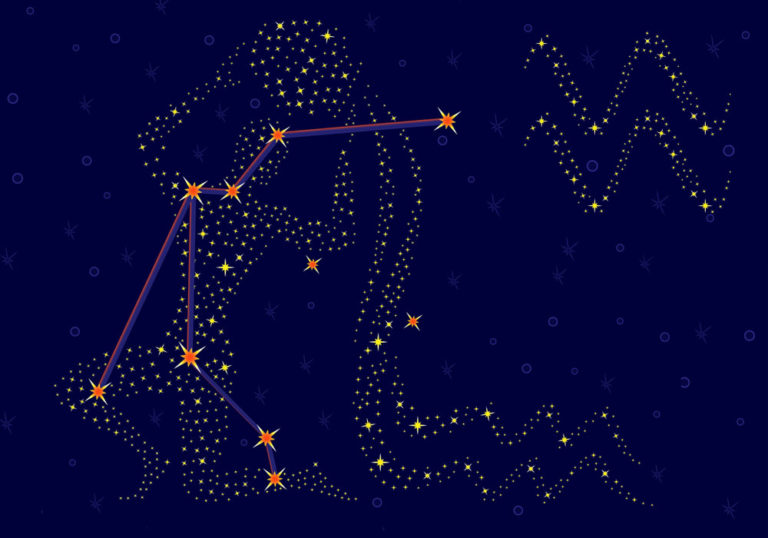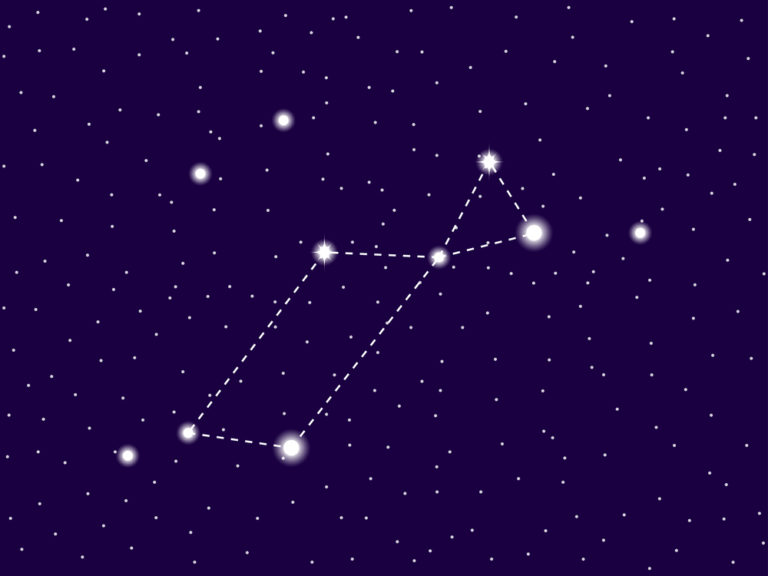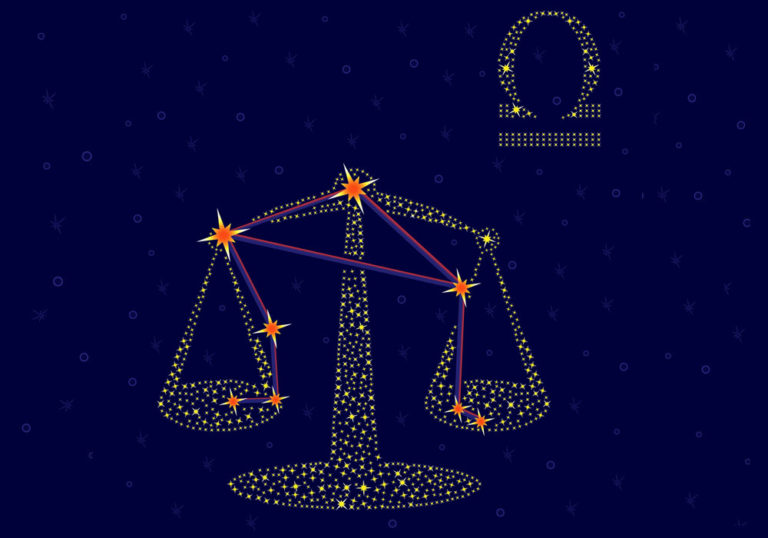Capricornus Constellation: Stars, Myth, and Location (2024)
Abbreviation: Cap
Symbolism: The Sea-Goat
R.A. position: 20h 06m 46.4871s to 21h 59m 04.8693s
Dec. position: −8.4043999° to −27.6914144°
Distance from earth: The average distance is 385.33 light-years.
Area: 414 sq. deg.
Brightest star: Deneb Algedi
Messier objects: 1
Meteor Showers: Alpha Capricornids, Chi Capricornids, Sigma Capricornids, Tau Capricornids, Capricornids-Sagittariids
Bordering Constellations: Aquarius, Aquila, Sagittarius, Microscopium, Piscis Austrinus
Visible at: Latitudes between +60° and −90°
Best viewed: During the month of September at 9.00pm
The Capricornus Constellation is one of the twelve constellations of the Zodiac. It is also known as the Sea-Goat and has its roots in myths from the Babylonian and Ancient Greek cultures.
Capricornus is the second faintest constellation. You can observe it in both the northern and southern hemispheres. It contains a number of interesting bright stars, including Alpha Capricorni, a double star that can be seen with the naked eye. (1)
Read on to find out all about Capricorn and fascinating Capricorn facts.
- Characteristics
- Features
- Location and visibility
- History of observation
- Mythology and meaning
- Future
Characteristics
Capricornus constellation
The Capricornus constellation is the 40th biggest constellation. It occupies an area of 414 square degrees. It was officially listed by the 2nd-century astronomer Claudius Ptolemy. (2)
For home astronomers, it offers some interesting objects. It has numerous stars with known planets – always interesting as these objects in a way resemble our solar system and may contain life. It also contains a famous Messier object known as M30.
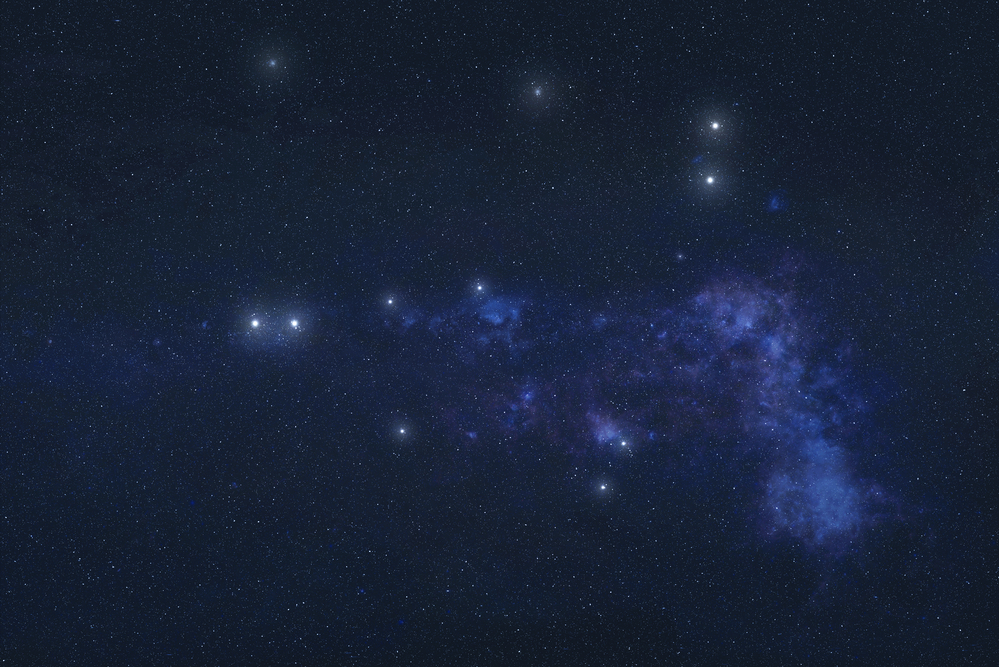
Capricornus is the smallest of the Zodiac constellations. While the Zodiac sign is called Capricorn, the constellation is known as Capricornus. The area of the sky in which Capricornus is found is known as the Sea. Capricornus is related to water as it is a half-goat, half-fish mythical creature. This area also contains water-related constellations including Pisces the Fish, and Aquarius the Water-Bearer.
The age of Capricornus dates back over 4000 years. Ancient Babylonian seals found by archaeologists contain images of a strange goat with the tail of a fish. (3)
The tropic of Capricorn is directly related to the constellation Capricornus. This is the place in the sky where the sun appears overhead at noon on the winter solstice. It originally was directly in the constellation, but the line has now moved and goes through the constellation of Sagittarius. (4)
Because this constellation is hard to spot, home astronomers sometimes look for the shape of a kite or a fan, as opposed to a goat.
What does Capricornus constellation look like?
The Capricornus Constellation, known as the Sea-Goat looks like a large goat-fish type creature. His body is formed by two halves – the head and upper back are that of a goat, the lower back and hindquarters are that of a fish.

This mythical creature stands with his front legs raised up as if he is galloping across the sky. His head is down, and huge antlers are raised upwards. His hind legs do not exist and are replaced by a large swirling fishtail that gives him the power to swim as well as run.
You can see this constellation in both the northern and southern hemispheres. In the southern hemisphere, constellations appear upside-down. To imagine the goat in the sky, there are 3 main stars in Capricorn, that identify the tail, head, and front legs. Prima and Secunda Giedi pinpoint the tip of his head. Deneb Algedi sits at the end of the fishtail. Omega lies at the lower tip of his leg.
How far is Capricornus constellation from earth?
Like most constellations, Capricornus is made up of numerous stars, exoplanets, and deep-sky objects. When observed from planet Earth, the constellation looks as if all the objects lie on the same plane. In fact, each object is at a different distance from the earth.
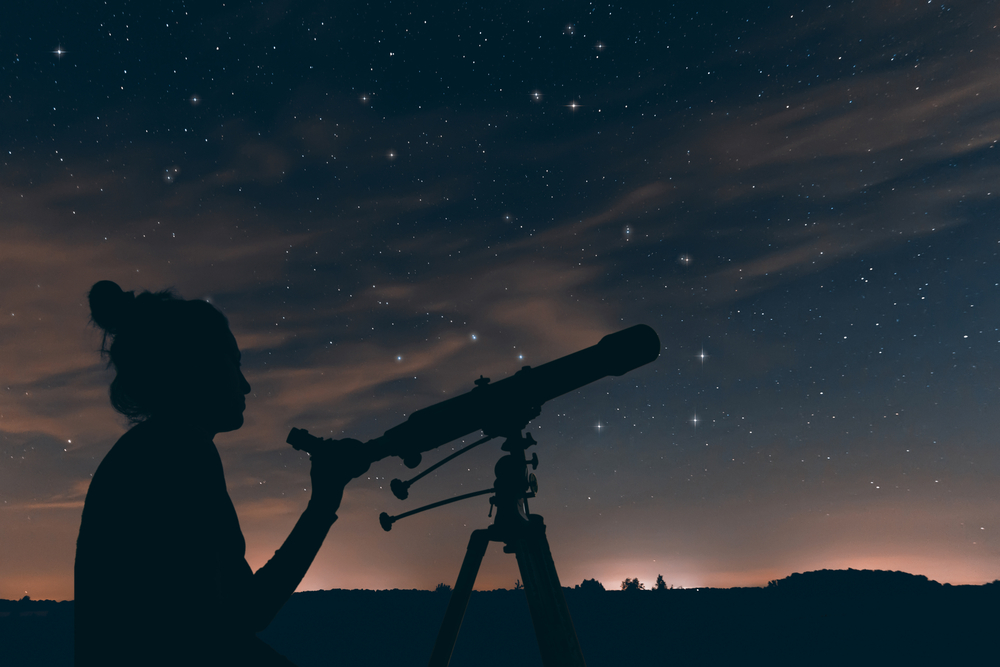
To give some idea, the third brightest star in Capricornus is Algiedi (Alpha Capricorni), and is 690 light-years away. Another major star, Dahbi (Beta Capricorni), the second brightest star in Capricornus. It is a star system located 328 light-years from our solar system.
The interesting Messier 30 object lies a massive 28000 light-years away. The nearest star to the Earth with an exoplanet is HD 204941 which is about 87.75 light away. The farthest star that is located in the constellation is HIP 107037 and it is 65232.67 light-years away from the Sun. (5)
Taking into account the objects and their individual distances, the average distance of Capricornus from the earth is 385.33 light-years. (6).
Zodiac family
Capricorn is the tenth sign of twelve in the Zodiac family. It represents people born between December 21 and January 19. It is an earth sign.
The goat constellation has two other zodiac constellations as neighbors in the night sky. Aquarius, the water-bearer lies to its top left. Sagittarius, the Archer, is found underneath and just in front of the Sea-Goat.

Like all the Zodiac constellations, the constellation Capricorn lies on the ecliptic path. This is the path that the sun takes as it moves across the sky during the year.
Capricornus is one of the four cardinal signs. The cardinal signs indicate a change of season when the sun makes its annual passage through them. Cancer represents the start of the winter season.
Capricornus is located in a region of the sky known as the ‘Sea’. Other zodiac constellations in this region are Pisces and Aquarius. (7) (8)
Features
Major stars in Capricornus
Here is a list of the major stars of Capricorn.
Algiedi – Alpha Capricorni (α Capricorni)
Algiedi gets its name from the Arabic al-jady, which means “the billy goat.” It is an optical binary star, made up of two star systems, Prima Giedi (Alpha-1 Capricorni) and Secunda Giedi (Alpha-2 Capricorni).
Alpha-1 Capricorni has a magnitude of 4.30 and is located about 690 light-years away. Alpha-2 Capricorni is a yellow G-type giant, about 109 light-years away. It has a magnitude of 3.58 and is the brighter of the two components. (9) (10)
Dabih – Beta Capricorni (β Capricorni )
Dabih is one of the important Capricorn constellation stars. It is a multiple main-sequence star. It has a visual magnitude of 3.08. Because of its moderate brightness, Dabih can be seen in clear skies with the naked eye. It is a blue-white star and is 27.23 times bigger than the Sun.
Deneb Algedi – Delta Capricorni (δ Capricorni)
Another one of the stars of Capricornus is Deneb Algedi. It has a visual magnitude of 2.87 and can be seen on a clear night without a telescope. It is made up of a 4-star system 39 light-years away from earth. The name comes from the Arabic ðanab al-jady, which means “the tail of the goat.” (11)
Nashira – Gamma Capricorni (γ Capricorni )
Nashira, also known as gamma Capricorni, is a hypergiant with a magnitude of 3.68. At this brightness, it can be seen with the naked eye in clear skies away from city lights. The star is located 157.04 light-years away and is about 4.97 times bigger than our sun. Its name comes from the Arabic phrase meaning “bearer of good news.”
Yen – Zeta Capricorni (ζ Capricorni)
For those interested in Capricorn astronomy, Zeta Capricorni is a double star composed of a yellow G-type supergiant and a white dwarf. The system has an apparent magnitude of 3.77 and is approximately 398 light-years away. Astronomers are interested in Zeta Cap because of its chemical composition which is high in Barium. (12) (13).
Dorsum – Theta Capricorni (θ Capricorni )
The dorsum is another one of the stars in Capricornus constellation. It is a white A-type main sequence dwarf located about 158 light-years away. The name comes from the Latin word for “the back”, in this case, referring to the back of the goat. It has an apparent magnitude of 4.08. With a magnification as high as this, it can be seen with the naked eye on a clear night away from city lights and pollution.
Baten Algiedi – Omega Capricorni (ω Capricorni)
Omega Capricorni is an M-type red giant star. The name comes from Arabic and means “the belly of the goat”. It is located about 630 light-years from Earth. The star has an apparent magnitude of 4.12. Baten Algiedi is a variable star, which shows variations in brightness and magnitude.
ψ Capricorni (Psi Capricorni)
Psi Capricorni is a yellow-white giant, main-sequence star. It is located relatively close to earth at a distance of about 47.9 light-years away. It has an apparent magnitude of 4.15. With a magnitude as high as this, it can be seen with the naked eye on a clear night.
Deep-sky objects in Capricornus
Messier 30 (NGC 7099)
Messier 30 (NGC 7099) is an exciting deep-sky object, known as a globular cluster, in the sea-goat constellation. It was discovered by Charles Messier in 1764. It lies about 28,000 light-years away and is approaching Earth at a speed of about 182 km/sec. It has an apparent magnitude of 7.5. This means that you will need a strong pair of binoculars or a telescope to view it. It lies below and to the right of Deneb Algedi. (14).
NGC 6907
NGC 6907 is a beautiful spiral galaxy located about 120 million light-years from Earth. Recently astronomers discovered another galaxy behind it, named NGC 6908. One atop the other, as seen from earth, creates a lovely image of spiraling dust clouds with long tails. NGC 6907 has seen four supernovae in the last 35 years. The most recent was discovered by R. Kushida, on July 24 2003 July 24. (15) (16) (17)
HCG 87
HCG 87 (Hickson Compact Group) is a group of galaxies in close proximity to one another. They are exciting for astronomers as they form one of the densest groups of galaxies known. The gravitational forces amongst the 5 galaxies create amazing starbursts, black holes, and gas explosions that have been occurring for hundreds of millions of years.
Exoplanets in the Capricornus
Exoplanets are planets that revolve around other stars, other than our star, the sun. Exoplanets excite astronomers as they may offer conditions similar to our solar system, with the possibility of life.
The Capricornus constellation has a number of important stars with exoplanets.
HD 204313
HD 204313 is a Main Sequence Star recorded in the Hipparcos star catalog. It lies within the Capricornus constellation and does not form part of the borders. It is a yellow star and can only be seen with a strong telescope. HD 204313 has at least 3 planets in orbit around it, named HD 204313b, c, and d. (18).
HD 202206
HD 202206 is one of the important stars in Capricornus. It is located about 147.85 light-years away from us. It is a yellow star and cannot be seen by the naked eye. A strong telescope will give an image of a dim star. Scientists believe that there are at least 2 planets orbiting around the star. (19)
HATS-15
HATS 15 is a star inside the constellation of Capricorn. It is located about 3187 light-years away. The star has one planet that orbits it, named HATS 15b. It is a huge planet, larger than Jupiter. Scientists have determined that the planet’s orbit is too far outside the habitable zone for it to sustain life. This planet was discovered in 2017. (20) (21)
HATS-36
HATS-36 is located about 1477.52 light-years away. It is a yellow-white star and can only be seen with a telescope. Orbiting the star is one planet called HATS-36b. Scientists have determined that the planet’s orbit is too far outside the habitable zone for it to sustain life. (22).
Meteor showers in Capricornus
Meteor showers are created when Earth crosses the orbital path of a comet. Bits of dust and debris from the remnants of the comet light up the sky when they enter and burn up in our atmosphere.
Alpha Capricornids
This meteor shower in Capricorn the goat, runs from 3 July to 15 August, with the peak of activity around 30 July. Meteor speeds reach up to 23 km/s and you can see around 5 per hour. These are bright stars, so prepare for a great night of viewing. It was discovered by Hungarian astronomer Miklos von Konkoly-Thege in 1871.
Chi Capricornids
The Chi Capricornids meteor shower originates from the Chi Capricorni star in the constellation. It takes place between 29 January and 28 February with the peak occurring on 13 February. The speed of the shower is around 65 km/s.
Sigma Capricornids
The first observations of this minor stream were made by Cuno Hoffmeister during 1937. They appear between 15 July to 11 August and are at a peak on 20 July. The speed is 30km/s and the hourly rate is around 5. This is a very weak meteor shower. (23) (24).
Capricorniden-Sagittarids
The Capricornids-Sagittariids meteor shower takes place during the daytime and crosses the boundaries of the Capricornus and Sagittarius constellations. It peaks around the 4 February and is a weak shower. Speeds reach 29km/s. (25) (26) (27).
Location and visibility
Where is Capricornus constellation located?
Are you wondering where is Capricornus located? Capricornus is the second faintest of the Zodiac constellations and is difficult to see. A visit to the local Planetarium where they can simulate a very bright night sky will help you to locate Capricornus in the sky.
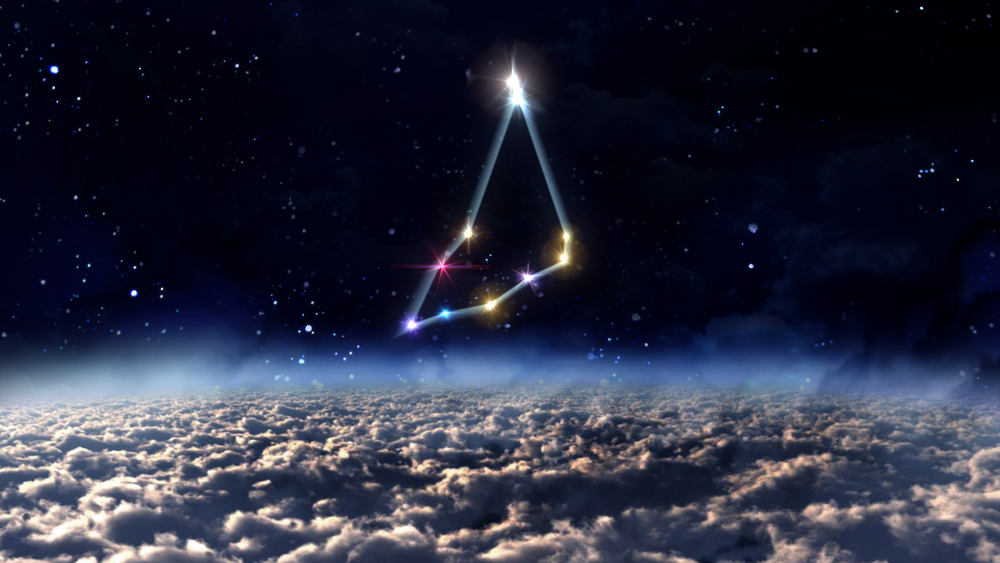
The goat constellation is the 40th biggest constellation in the sky, occupying an area of 414 square degrees.
It lies in the fourth quadrant of the southern hemisphere, SQ4. A quadrant is essentially a quarter of a circle, which allows astronomers to measure the altitude of objects above the horizon. You can see the constellation at latitudes +60° and -90°.
The main neighboring constellations are Aquarius, Aquila and Sagittarius. Aquarius and Aquila lie above the Capricorn star constellation. Sagittarius lies under the front legs of the Goat. (28).
When is Capricornus constellation visible?
For northern hemisphere stargazers, in August and September, Capricorn constellation appears low in the southeast night sky between 9pm and 10pm.
It slowly dips below the horizon around 4am. In July it is visible from around midnight. In October and November, you may ask – when is Capricornus visible? It will be visible in the southern sky from around 7pm to 8pm.

For southern hemisphere stargazers wanting to know when is Capricorn visible – in August and September look into the eastern sky at around 8pm.
It then climbs high to the north by midnight. In July, Capricornus or Capricorn can be seen at about 10pm low in the eastern horizon, climbing overhead by around 3am. In October and December, it is visible around 9pm to 10pm high in the northern night sky. (29).
How to find Capricornus constellation?
Northern Hemisphere
Where is Capricorn?
- To locate Capricornus, you can find Aquarius and look for three bright stars underneath it that form a triangle.
- You can alternatively find Sagittarius, and look for the three bright stars above and to the right.
- The bright star on the right is Algerdi-Alpha and pinpoints the top of the Goat’s Head.
- Look to the left and the bright star is Deneb, the tip of the fishtail.
- At the base of the triangle is Omega, one of the bright Capricorn stars, which lies at the tip of the front leg
Southern Hemisphere
In the Southern Hemisphere, all constellations are seen upside down, so where is Capricorn located?
- To find the Capricorn location, you can find Aquarius and look for three bright stars above it that form a triangle.
- You can alternatively find Sagittarius and look for the tree bright stars below and to the right.
- The bright star on the right is Algerdi-Alpha and pinpoints the top of the Goat’s Head.
- Look to the left and find the bright Capricorn star Deneb, indicating the tip of the fishtail.
- At the top of the triangle is Omega, which lies at the tip of the front leg.
Take a look at the Capricorn map for a visual image.
How to view Capricornus Constellation?
If you are out and about, far from the city lights, and interested in Capricornus, you may be lucky enough to see some of the Capricornus stars with the naked eye. It is the second faintest of the Zodiac constellations and therefore sometimes difficult to find.
Using a powerful pair of binos will give you a better chance of viewing the Sea-Goat. The best way to view the Sea-Goat is through a telescope. For amateurs, there is a great choice of well-priced scopes that will give you fabulous views, even in your city garden.
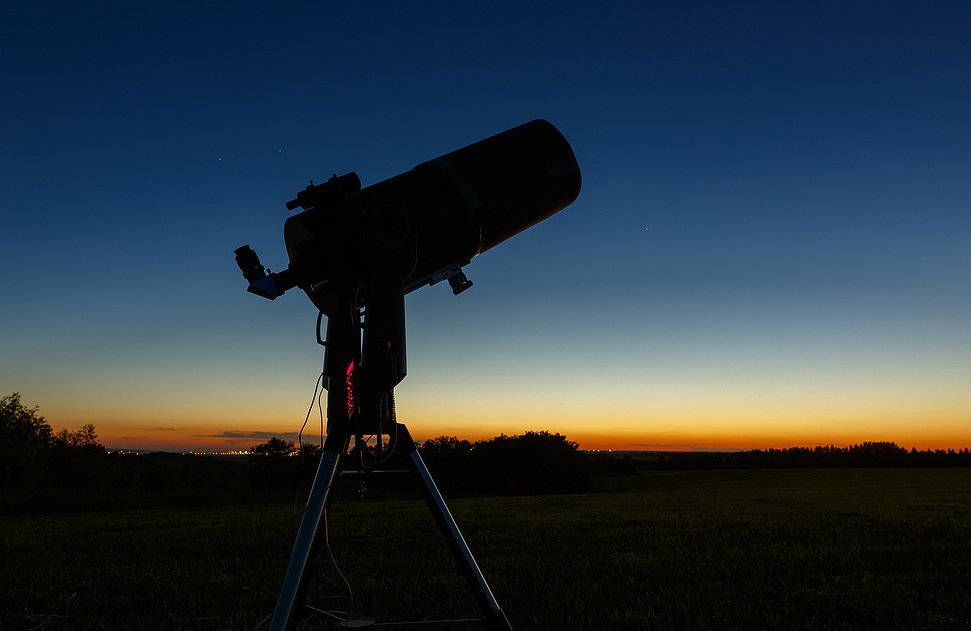
Depending on your budget, you can spend from around $250 to $900 on a telescope that will last for many years.
The Meade Polaris 90mm German Equatorial Refractor Telescope is a great choice and is well priced at around $260. It wowed with clear, crisp views of the night sky. The scope comes with a stable Equatorial mount with slow-motion controls.
It has 3 eyepieces that provide a choice of low (26mm), medium (9mm), and high (6,3mm) powered magnification. The scope is easy to use with a Red Dot Viewfinder helps you point directly at objects you want to observe. To add to the excitement, it comes with a Bonus Autostar Suite Astronomy planetarium DVD which offers over 10,000 celestial objects.
History of observation
Who discovered Capricornus constellation?
Ancient Capricorn history tells us that the Babylonians, as keen astronomers, had identified a constellation that they named the Sea-Goat, about 3000 years ago. Cylinder seals found in the Middle Bronze age, around 3000BC to 1200BC, showed drawings of this mythical creature. The Sea-Goat was documented in Babylonian star catalogs before 1000BC.
The ancient Sumerians also documented the mythology of Capricornus. They called it SUHUR-MASH-HA, the goat-fish.
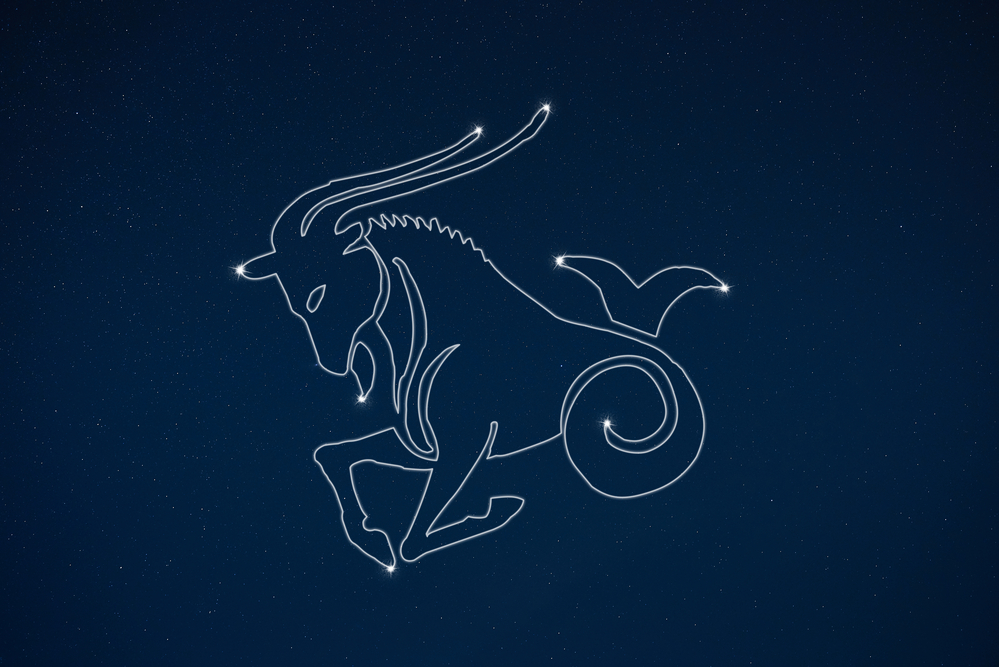
Chinese astronomers also had a Capricorn story. They linked some of the stars of Capricornus to form a constellation called Niu, the Ox, thought to represent an animal for the midwinter sacrifice.
They also gave names to many of the stars in Capricornus. They were known as Shierguo and referred to the 12 provinces of China. Capricornus also contained parts of two Chinese constellations that spilled over from neighboring Aquarius.
For those interested in Capricorn constellation facts – in somewhat more recent times, the famous astronomer Ptolemy named the Capricornus constellation. He lived between 90 AD and 168 AD. (30).
How old is Capricornus constellation?
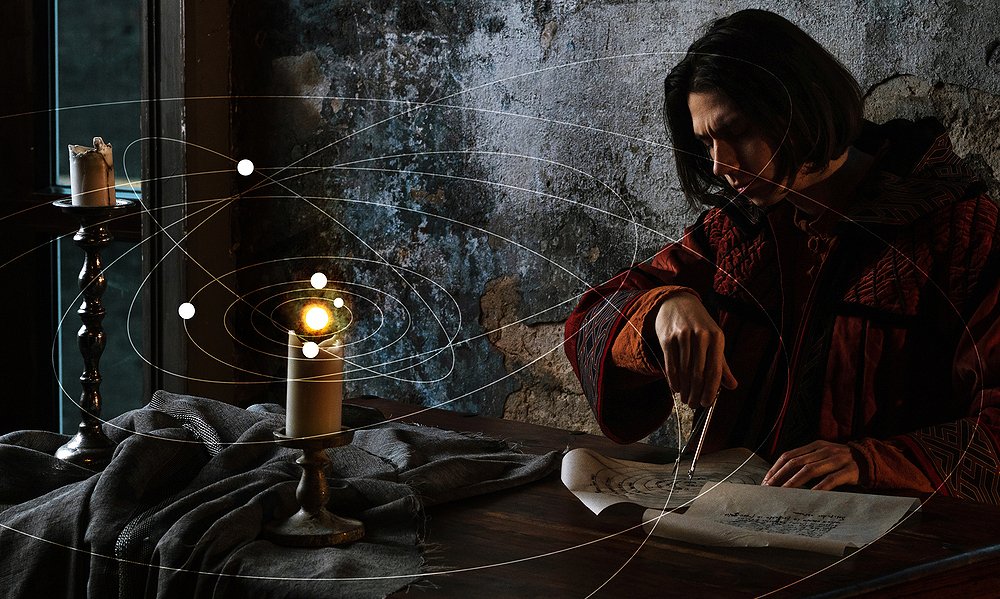
As long ago as 3000BC, Babylonians were depicting a mythical goat creature on ancient seals.
The constellation was documented in Babylonian star catalogs before 1000BC. The constellation was known during the Middle Bronze age which dates from 3000BC to 1200BC.
In somewhat more recent times, the famous Ptolemy named the Capricornus constellation in the 2nd century.
How did the Capricornus constellation get its name?
Many people ask – how did Capricorn get its name? Constellation names often come from ancient mythology stories and sometimes there are more than one.

Capricorn means Sea-Goat and one story has its root in the Sumerian culture. They identified a mythical creature that was half goat and half fish.
In Babylonian folklore, a goat-fish creature was used as a symbol on seals. The most well-known tale comes from Capricorn greek mythology, where it was associated with Pan, the God of Nature.
Pan escaped from the monster Typhon by jumping into the Nile. Only half his body was submerged, and he came part fish, creating the Capricorn goat creature. (31) (32).
Mythology and meaning
Capricornus myth
Like many of the constellations, there are several different Capricorn mythology stories about the Sea-Goat.
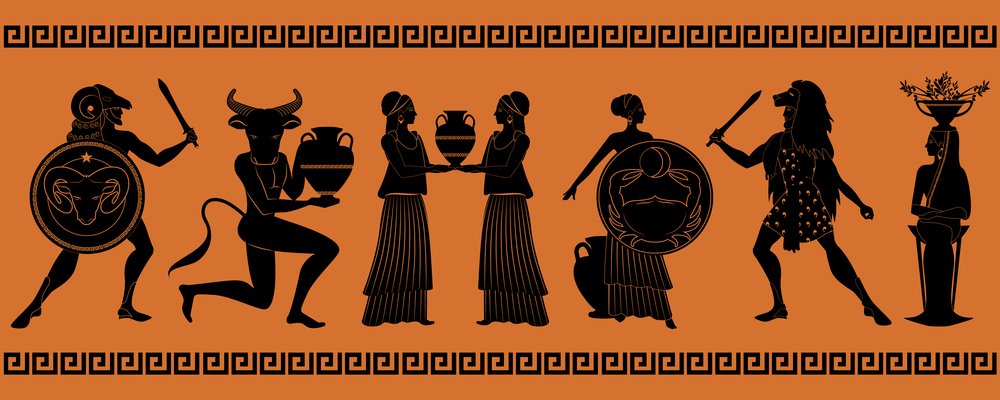
Pan, God of the Wild, Hunting, and Music
Here is one story about what is the meaning of Capricorn. The ancient Capricorn myth dates back over 4,000 years. It tells the story of Pan, the God of the Wild, Hunting, and Music. Pan was a faun – a half-human, half-goat creature that lived in the wild forests of the mountains.
Zeus, King of the Gods, became embroiled in the War of the Gods against the Titans. Pan joined Zeus and fought alongside him and his allies. During one of the many battles, Pan was attacked by the grisly monster Typhon who had 100 dragon heads.
Pan leaped into the River Nile to escape. Only half his body was submerged and that part transformed into a fishtail, allowing him to swim to safety. The God Zeus honored Pan by placing this Capricorn mythical creature in the sky.
The Goat Amalthea
Another Greek Capricornus myth tells the story of Amalthea. She was a goat that suckled the infant Zeus, who became King of The Gods.
Cronos, his father, wanted to devour him, but he was saved by his mother, Rhea. In this Capricorn legend, she allowed the goat to suckle the baby in secret, so she could hide him from Cronos. (33)
What does Capricorn symbolize?
Are you fascinated by the Capricorn symbol meaning and the myth of Capricorn? In ancient history, Capricorn meaning is a mythical creature, half-goat, half fish. The creature was transformed from the half-man, half-goat god named Pan after he jumped into the River Nile to escape the monster Typhon.
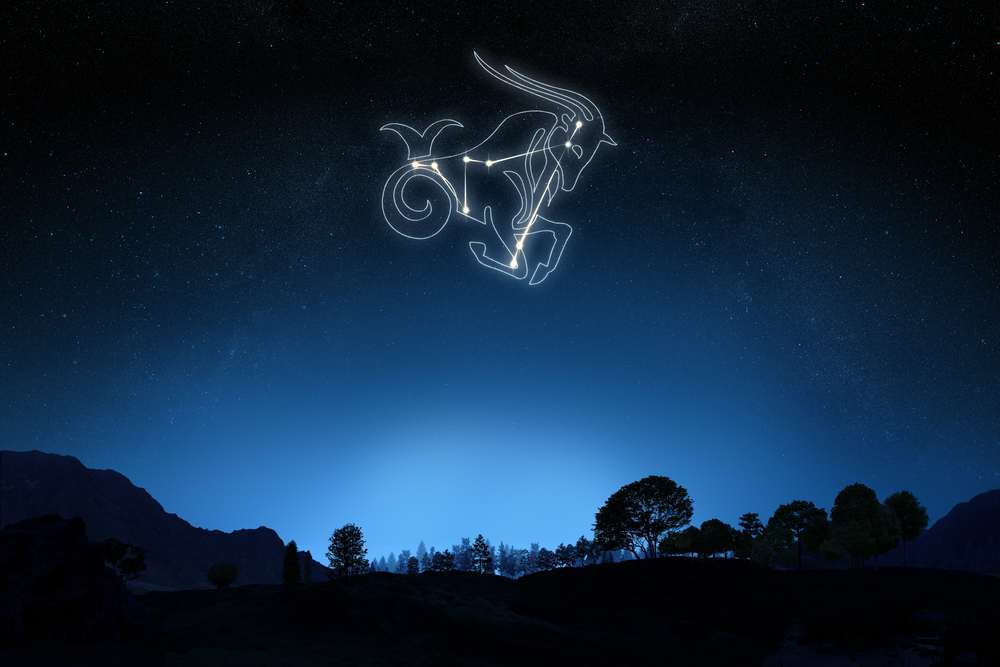
This Capricorn creature represents fortitude to overcome challenges and adapt to the situation. In modern terms, the meaning of Capricorn shows resilience to adapt and inner strength to reach goals, no matter what obstacles are in the way.
The sea goat represents ambition, persistence, and discipline. Because Capricorns have endured hardships, they tend to become playful and optimistic as they mature.
People born under the sign of goats in mythology show great personal strength and perseverance and achievements. Sir Isaac Newton and Muhammad Ali are perfect examples of famous people of Capricorn origin. (34) (35)
Future of Capricornus constellation
The Capricorn Constellation remains one of the Zodiac signs and as time progresses and more powerful telescopes are invented, we will no doubt find more exciting celestial objects in this constellation.
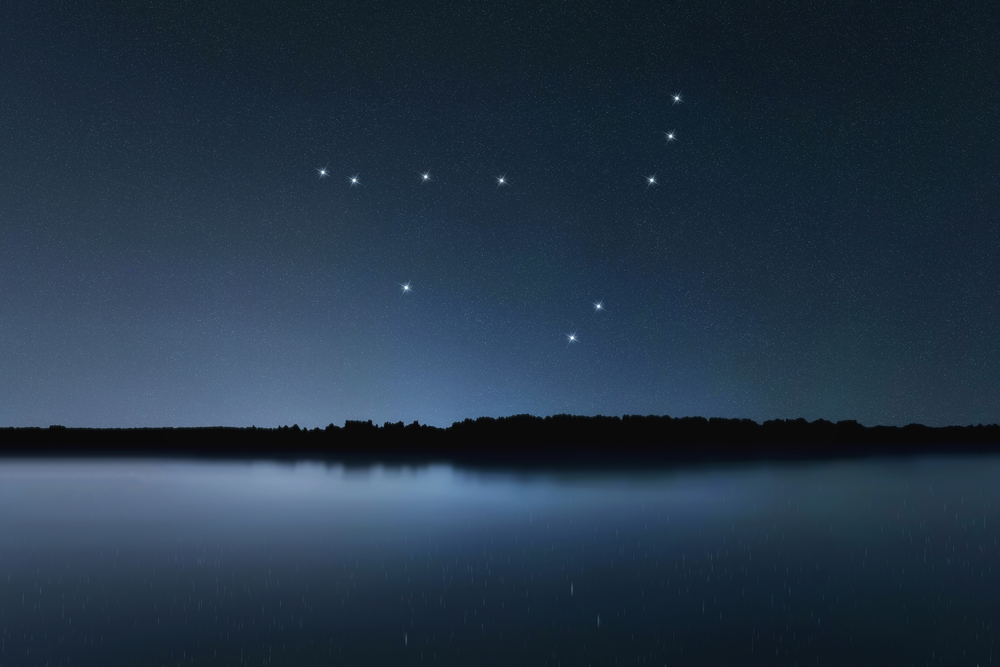
Meteor showers are amazing sights to see and every year Capricorn offers a great show called the Alpha Capricornids. It can be seen from 3 July to 15 August, with the peak of activity around 30 July.
Here is some more interesting Capricorn information – The star Delta Capricorni, which indicates the Sea-Goat’s tail, has an exciting future.
It has exhausted its hydrogen supplies that exist at the core. It is now on its way to becoming a true giant, probably a red one. As the core collapses, the temperatures will rise and its outer layers will expand. (36).

